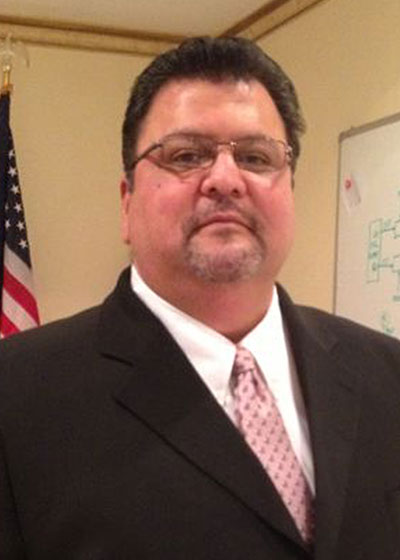2014 CEOs Who 'Get It'
The National Safety Council recognizes 10 leaders who demonstrate a personal commitment to worker safety and health

 |
 |
Terry M. Kasnavia
President and CEO
PIKA International Inc.
 |
Accomplishments
|
Why is safety a core value at your organization?
Safety is about protecting people. Whether our employees, subcontractors, client representatives or the surrounding community, PIKA’s respect and appreciation for people is the driving force behind our aggressive pursuit toward a safe and healthful workplace – making safety a premier core value within PIKA.
Describe your journey to becoming a CEO who understands the importance of worker safety.
Throughout the years, PIKA’s employees and their families have been the most instrumental driving force behind my understanding and commitment to safety. When one personalizes the depth of the impacts occurring from an employee injury, and its effects on the family unit, safety takes on a new meaning.
Speaking on the individual employee level, I have seen friends and family members impacted by injuries. Some experienced a temporary reduction in their quality of life, while others experienced permanent reductions – this too brings depth to the meaning of safety.
Throughout these various experiences, I have realized that safety is a conscious decision that a company must make; beginning with me, the president and CEO, and extending throughout the organization. Safety must become an integral part of a company’s culture. I realize that I have the pleasure of holding a position that can have a positive impact on the safety of the men and woman within my organization. I have accepted this as one of my primary responsibilities and continue to acknowledge its importance.
What is the biggest obstacle to safety at your organization, and how do you work to overcome it?
The biggest obstacle to safety within our organization is the many challenges associated with our ability to assess, manage and develop each person’s individual behavior and outlook toward safety.
The abstract nature of this obstacle makes it challenging, as it can sometimes be difficult to understand the mindset of each employee, continually staying in touch with their motivations and relating those motivations to safety within the workplace.
To assist with this endeavor, we continue to develop our site management personnel in understanding the importance of knowing each employee, and in spending the time needed, to fully explain the intent of each hazard control, in keeping the employee safe.
How do you instill a sense of safety in employees on an ongoing basis?
Safety at PIKA is a process of continuous improvement and training. Safety is instilled within my senior-level management, to project management and to each employee.
Key PIKA safety initiatives include:
- Recognition of safety as our first priority toward the completion of each and every task.
- Introduction of the “Safety Moment,” which is a brief safety note that is shared before each PIKA meeting. I participate in these “Safety Moments” myself.
- Providing positive reinforcement of our near-miss reporting program, which utilizes the power of lessons learned to raise awareness to the hazards faced on each project and within the organization as a whole. My philosophy is that the reporting of near misses is a positive team contribution that should be analyzed and openly discussed, to assure that subsequent exposures are identified and controlled accordingly.
- Reinforcement of positive safety behavior through the employment of the National Safety Council’s employee and team safety recognition program.
Overall, I find the most effective way to instill safety within our employees is through my personal leadership and that of my senior management staff. We look to represent and support sincere efforts toward the achievement of “Efficiency and Productivity through Safety; A Safe Approach to Task Execution.”
How does your organization measure safety? What are the leading indicators that show you how safe your organization is, and where do you see room for improvement?
Ultimately, the real indicator of safety is whether we are keeping our personnel, subcontractors, client representatives and the local community free from harm – there is no level of personnel injury that is acceptable. Environmental considerations should be mentioned as well, as environmental harm also must be guarded against.
The leading indicators that assist PIKA in measuring safety within our organization include:
- The active identification and reporting of near misses, involving a thorough assessment and implementation of hazard controls accordingly. This indicator is very important, as it is reflective of a proactive approach to identifying, scrutinizing and subsequently protecting personnel from hazards.
- Corporate safety audits, by which opportunities for improvement are identified, corrective actions implemented and follow-up inspections conducted; trends are noted and shared among the project sites.
- Project assessments conducted during each project’s life cycle to examine at what point and from which level safety considerations are voiced. For instance, a project involving the recognition and communication of safety considerations from the proposal phase on through project completion is an indicator of satisfactory safety involvement, whereas a project that engages safety from a reactive standpoint (not considering safety throughout the project life cycle) is an indicator of a team requiring further development.
PIKA International Inc., based in Stafford, TX, is a multidisciplinary environmental engineering and remediation services firm capable of meeting the often diverse and complex needs of its clients. It offers a spectrum of turnkey investigative and cleanup services with emphasis on environmental consulting and remediation, munitions response including demilitarization, and radiological waste handling including depleted uranium. The company employs 94 workers.

